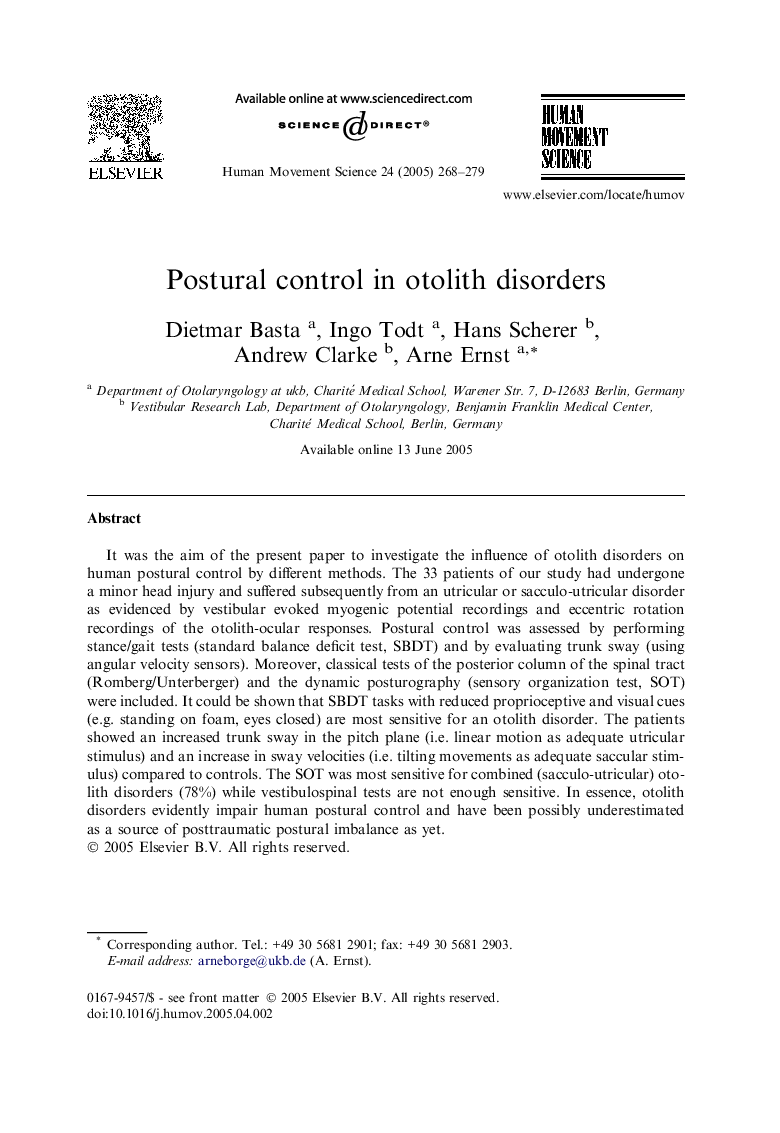| کد مقاله | کد نشریه | سال انتشار | مقاله انگلیسی | نسخه تمام متن |
|---|---|---|---|---|
| 10459267 | 922411 | 2005 | 12 صفحه PDF | دانلود رایگان |
عنوان انگلیسی مقاله ISI
Postural control in otolith disorders
دانلود مقاله + سفارش ترجمه
دانلود مقاله ISI انگلیسی
رایگان برای ایرانیان
کلمات کلیدی
موضوعات مرتبط
علوم زیستی و بیوفناوری
علم عصب شناسی
علوم اعصاب شناختی
پیش نمایش صفحه اول مقاله

چکیده انگلیسی
It was the aim of the present paper to investigate the influence of otolith disorders on human postural control by different methods. The 33 patients of our study had undergone a minor head injury and suffered subsequently from an utricular or sacculo-utricular disorder as evidenced by vestibular evoked myogenic potential recordings and eccentric rotation recordings of the otolith-ocular responses. Postural control was assessed by performing stance/gait tests (standard balance deficit test, SBDT) and by evaluating trunk sway (using angular velocity sensors). Moreover, classical tests of the posterior column of the spinal tract (Romberg/Unterberger) and the dynamic posturography (sensory organization test, SOT) were included. It could be shown that SBDT tasks with reduced proprioceptive and visual cues (e.g. standing on foam, eyes closed) are most sensitive for an otolith disorder. The patients showed an increased trunk sway in the pitch plane (i.e. linear motion as adequate utricular stimulus) and an increase in sway velocities (i.e. tilting movements as adequate saccular stimulus) compared to controls. The SOT was most sensitive for combined (sacculo-utricular) otolith disorders (78%) while vestibulospinal tests are not enough sensitive. In essence, otolith disorders evidently impair human postural control and have been possibly underestimated as a source of posttraumatic postural imbalance as yet.
ناشر
Database: Elsevier - ScienceDirect (ساینس دایرکت)
Journal: Human Movement Science - Volume 24, Issue 2, April 2005, Pages 268-279
Journal: Human Movement Science - Volume 24, Issue 2, April 2005, Pages 268-279
نویسندگان
Dietmar Basta, Ingo Todt, Hans Scherer, Andrew Clarke, Arne Ernst,